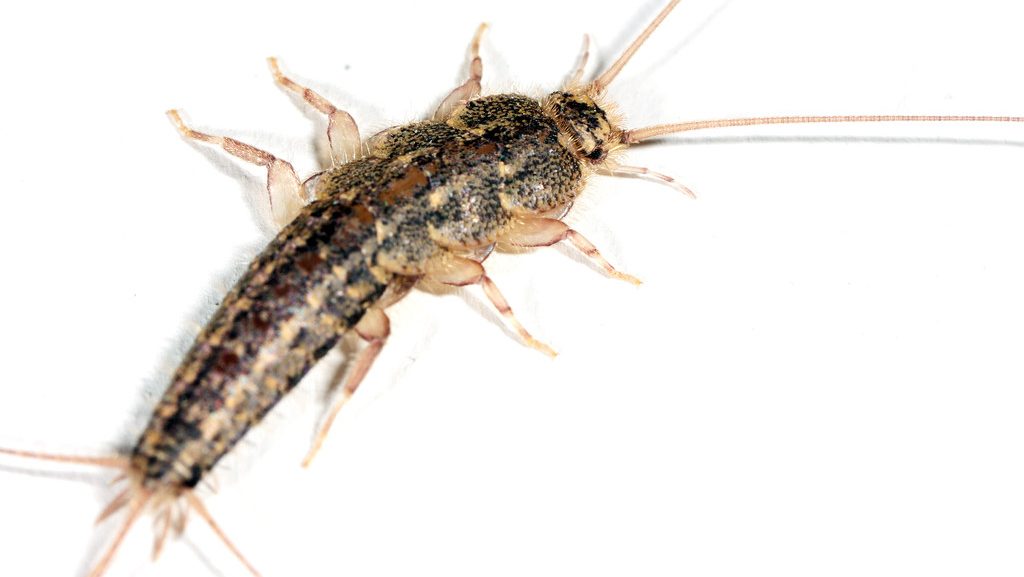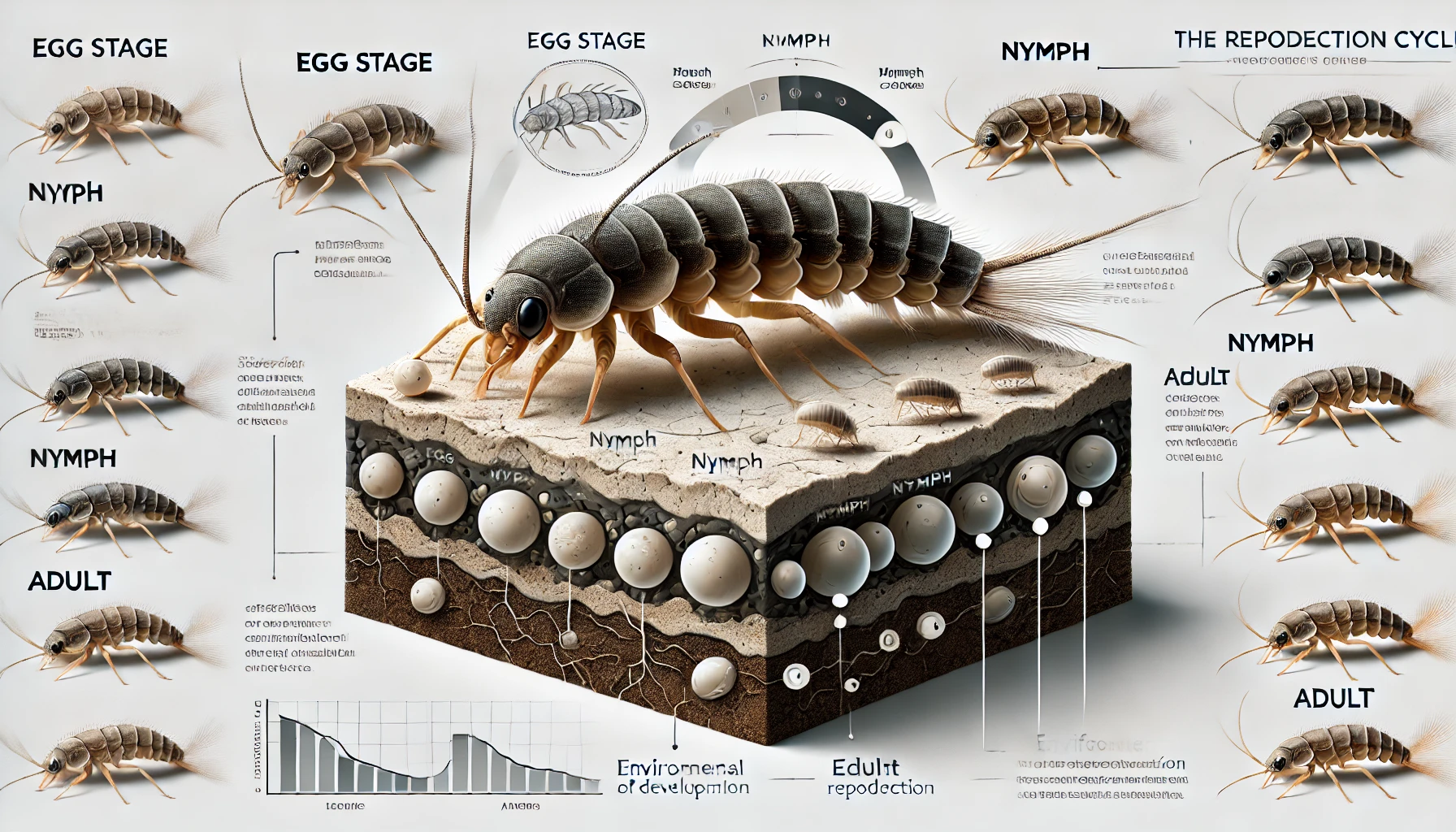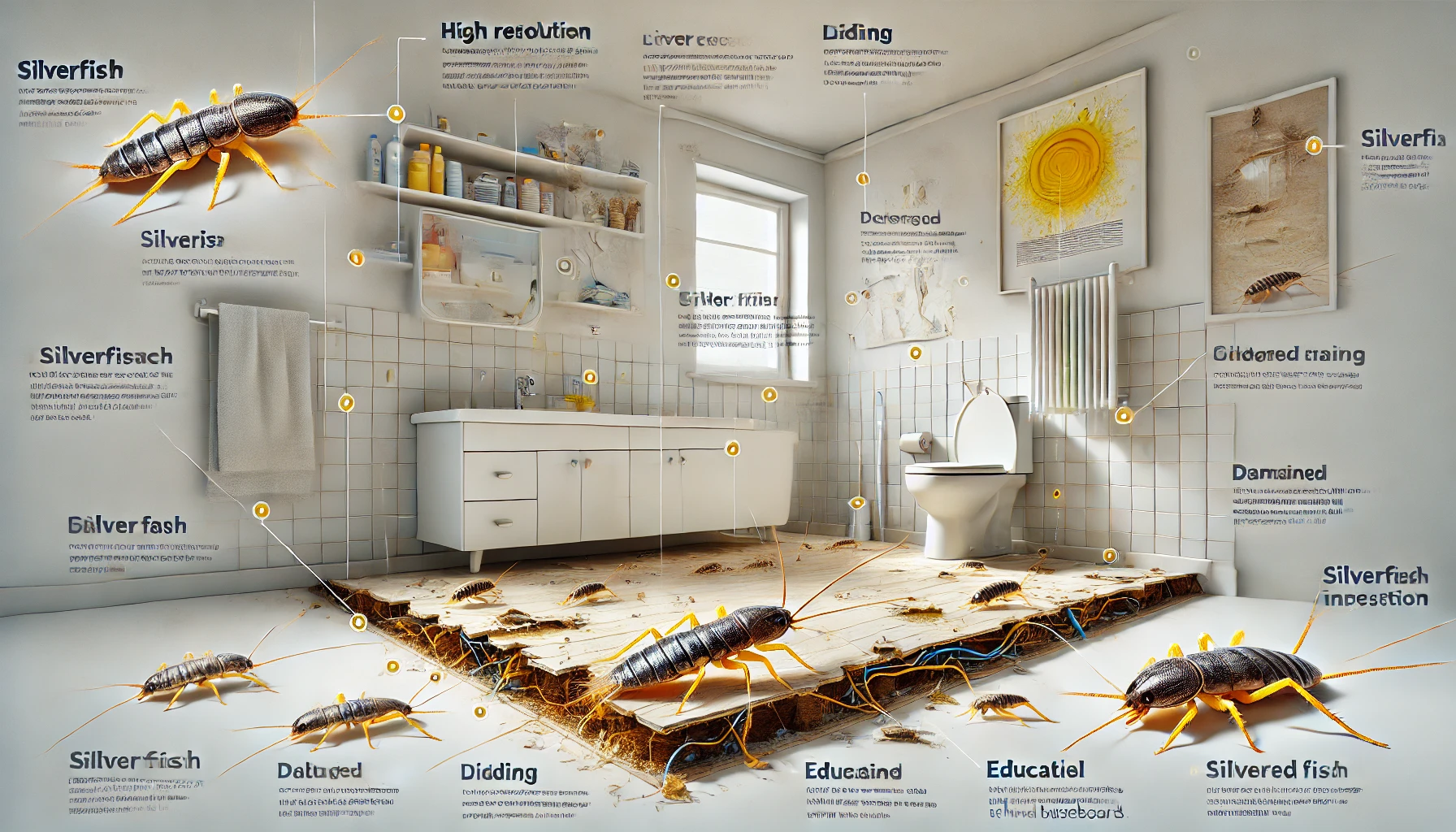Key Takeaways
- Silverfish live 2–8 years and can survive months without food.
- Females lay up to 100 eggs in dark, humid areas.
- Reduce moisture to prevent infestations effectively.
- Signs include yellow stains, small holes, and shed skins.
- Control silverfish by reducing humidity, sealing cracks, and regular cleaning.
- They require water to survive, so fix leaks and dehumidify your home.
 Silverfish are small, wingless insects known for their silvery-blue scales and quick, fish-like movements. They are common household pests, often found in dark, damp areas such as basements, bathrooms, and attics. Despite their size, silverfish can cause significant damage to items like books, wallpaper, and clothing. Understanding their lifespan and reproduction is essential to effectively managing an infestation.
Silverfish are small, wingless insects known for their silvery-blue scales and quick, fish-like movements. They are common household pests, often found in dark, damp areas such as basements, bathrooms, and attics. Despite their size, silverfish can cause significant damage to items like books, wallpaper, and clothing. Understanding their lifespan and reproduction is essential to effectively managing an infestation.


Not getting a solution?
Get your free pest control estimate today!How Long Do Silverfish Live?
Silverfish have a remarkably long lifespan for such small insects, living between 2 to 8 years, depending on environmental conditions. One reason for their longevity is their ability to adapt to various environments. While they prefer humid areas, they can survive in a range of climates. Silverfish exhibit slow development, taking up to 3 years to fully mature. This slow growth allows them to remain in a juvenile stage for extended periods, contributing to their long life cycle.How Long Do Silverfish Live Without Food?
Silverfish are resilient pests capable of surviving for several months without food. However, their survival rate decreases in dry conditions since they rely on humidity for hydration. In optimal conditions, silverfish can continue to live and reproduce, making them challenging to eradicate.How Do Silverfish Reproduce?
Silverfish reproduction is a slow but steady process. Mating involves a unique dance-like ritual, where the male and female perform movements before transferring sperm. Once fertilised, female silverfish can lay between 2 to 20 eggs at a time and up to 100 eggs over their lifetime. The eggs are laid in dark, humid areas such as cracks, crevices, and hidden spaces. Depending on the environment, the eggs hatch in 3 weeks to 2 months, with warmer, more humid conditions accelerating the process.
The Silverfish Life Cycle
Silverfish go through three stages: egg, nymph, and adult. After hatching, nymphs resemble miniature versions of adults but are white in colour. They grow by moulting, shedding their outer skin up to 60 times throughout their lives. Each moult allows them to grow into their signature silvery-blue adult form, enabling their long lifespan. The Egg Stage Silverfish begin their life cycle with their first stage known as eggs, which are small and oval-shaped. Female silverfish lay their eggs in hidden, dark, and wet areas of the house, such as cracks in walls, under furniture, in the folds of garments, and even inside books and magazines which one cannot imagine. The number of eggs laid by a single female silverfish can vary, with some species depositing up to 100 eggs throughout their lifespan.The egg stage goes on from two weeks to two months, which entirely based on environmental conditions that are happening such as humidity and temperature. The warmer and more humid the environment, the faster the eggs hatch. This stage is an important part of the process for the silverfish’s survival, as it ensures that the next generation can emerge in an environment that suits their development. The Nymph Stage Once the eggs hatch, the silverfish larvae, or nymphs, emerge. These tiny, semi-transparent creatures resemble diminutive adults but are lighter in colour and lack silvery scales. The nymphs immediately begin to feed on organic matter such as starches and sugars, which are found in household items like books, paper, glue, and fabrics.
As nymphs grow, they undergo several moults, or shedding of their exoskeleton, before reaching maturity. Silverfish nymphs can moult up to 50 times during their development, and this process typically takes three months to several years. The duration of the nymph stage is influenced by factors such as temperature, food availability, and humidity. The Adult Stage After a number of moults, silverfish reach its adult stage of the process. Adult silverfish can vary from about ½ to 1 inch long and are covered in silvery-grey scales, which provide them a glossy look. They are also easily recognisable by their three long appendages extending from the rear of their bodies. Unlike many insects, silverfish continue to moult throughout their lives, although the frequency of moults decreases as they age.
Adult silverfish are most active at night when they search for food and can live for up to eight years under ideal conditions. Silverfish grow in damp environments and often be found in cellars, attics, bathrooms, kitchens, and other places with high humidity levels.
Where Do Silverfish Lay Their Eggs?
Silverfish lay eggs in dark, damp, and secluded areas such as cracks in walls, under floorboards, and inside books. The eggs are tiny, less than 1 millimetre, making them hard to spot without close inspection. Identifying and treating these egg-laying sites is crucial for preventing infestations.
Common Signs of Silverfish Infestation: How to Recognize Silverfish in Your Home
Silverfish infestations often go unnoticed at first, as these elusive pests tend to be most active at night and prefer dark, humid environments. However, there are clear and unmistakable signs that silverfish leave behind. Recognizing these signs early helps you take action promptly to minimize damage and eliminate these pests effectively. 1. Yellow Stains on Books, Papers, or Other Materials One of the most common and distinctive signs of a silverfish infestation is the appearance of yellow or brownish-yellow stains on paper-based items such as books, documents, wallpaper, or photographs. These stains occur because silverfish feed primarily on paper, glue, and organic starches, leaving behind discoloration from their saliva and fecal residues.Why It Happens
-
Saliva and Feeding Residue: Silverfish secrete saliva to soften paper and glue. As it dries, it leaves yellow stains that can damage documents and photographs.
-
Damage to Books and Important Papers: Silverfish target binding glue in books, wallpaper paste, and cardboard, making these items vulnerable.
What to Look For
-
Bookshelves and Storage Areas: Inspect bookshelves, filing cabinets, and storage boxes for small yellowish stains.
-
Dark or Humid Areas: Keep an eye on damp, dark spaces where paper or cardboard is stored—ideal habitats for silverfish.
Why It Happens
-
Feeding Habits: Silverfish consume cellulose and starch, damaging items like wallpaper, textiles, and clothing by leaving small holes.
-
Preference for Natural Fabrics: They favour natural fibres such as cotton, silk, and linen—especially starched fabrics—posing a risk to garments and upholstery.
- Inspect stored clothing or items stored in dark closets or drawers for unexplained small holes or frayed edges.
- Regularly check wallpapered walls or upholstered furniture, especially in hidden or rarely inspected areas, for signs of damage.
- Early detection of these holes can help you implement pest control strategies quickly, preserving your home’s aesthetics and your personal belongings.
Why It Happens
-
Moulting Lifecycle: Silverfish moult frequently as they grow, leaving behind multiple shed skins throughout their habitat.
-
High Population Indication: Numerous shed skins often signal a large silverfish infestation in the area.
- Inspect areas that provide the ideal environment for silverfish—moisture-rich, warm, and secluded locations such as bathrooms, basements, crawlspaces, and closets.
- Look closely at baseboards, under furniture, behind appliances, or within storage boxes and bookshelves where these skins typically accumulate.
Why It Happens
-
Digestive Process: Silverfish leave droppings while feeding on paper, fabric, and starchy materials, signaling their presence.
-
Aggregation Around Food Sources: Droppings are usually found near feeding areas, helping locate infestation zones.
- Examine areas near books, stacks of paper, cardboard boxes, or wallpaper for tiny black specks.
- Check kitchen pantries, closets, and cabinets regularly—especially those containing flour, cereal, or stored papers—as these areas commonly attract silverfish.

Effective Methods to Control Silverfish
-
Reduce Humidity: Use a dehumidifier or improve ventilation to create less hospitable conditions for silverfish.
-
Seal Cracks and Crevices: Prevent silverfish from accessing hiding spots by sealing entry points in walls and floors.
-
Regular Cleaning: Eliminate organic debris such as dust, paper, and food particles to remove food sources.
-
Use Insecticides: Apply insecticides designed specifically for silverfish in targeted areas.
-
Set Traps: Sticky traps or natural deterrents like diatomaceous earth can help catch silverfish effectively.





